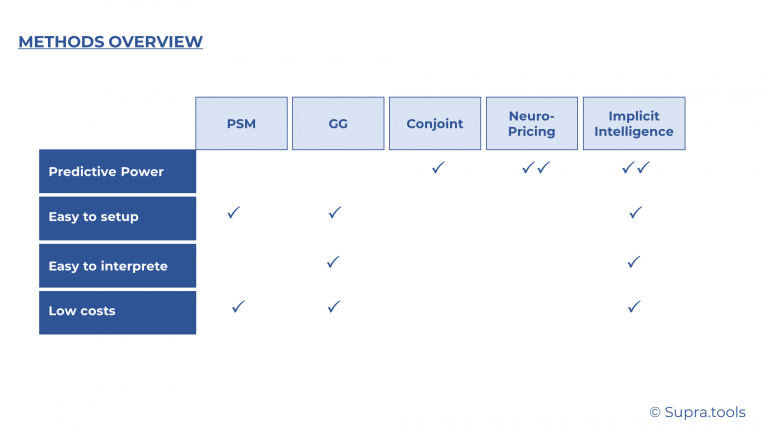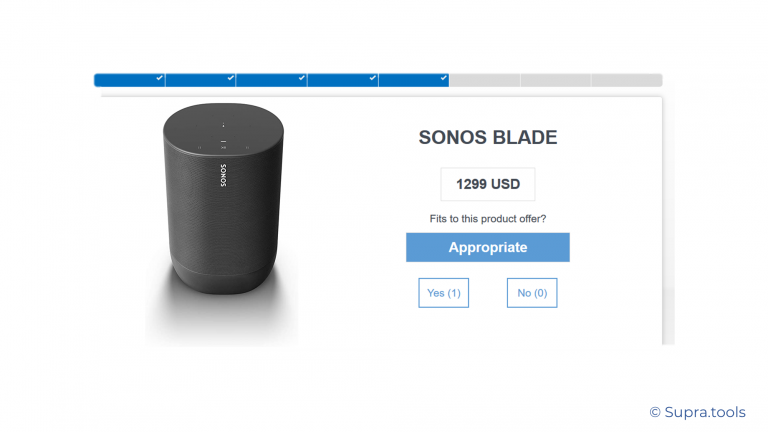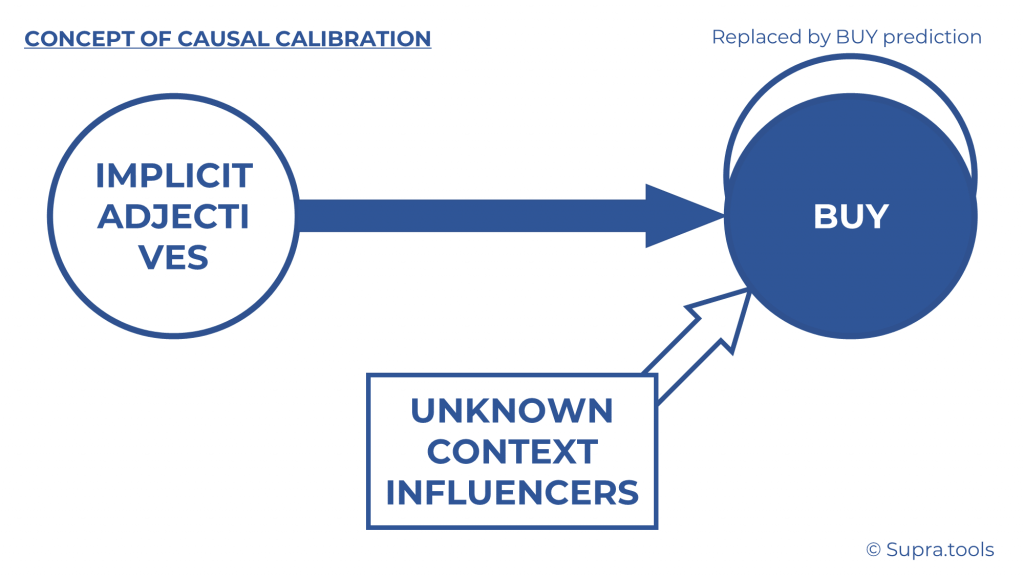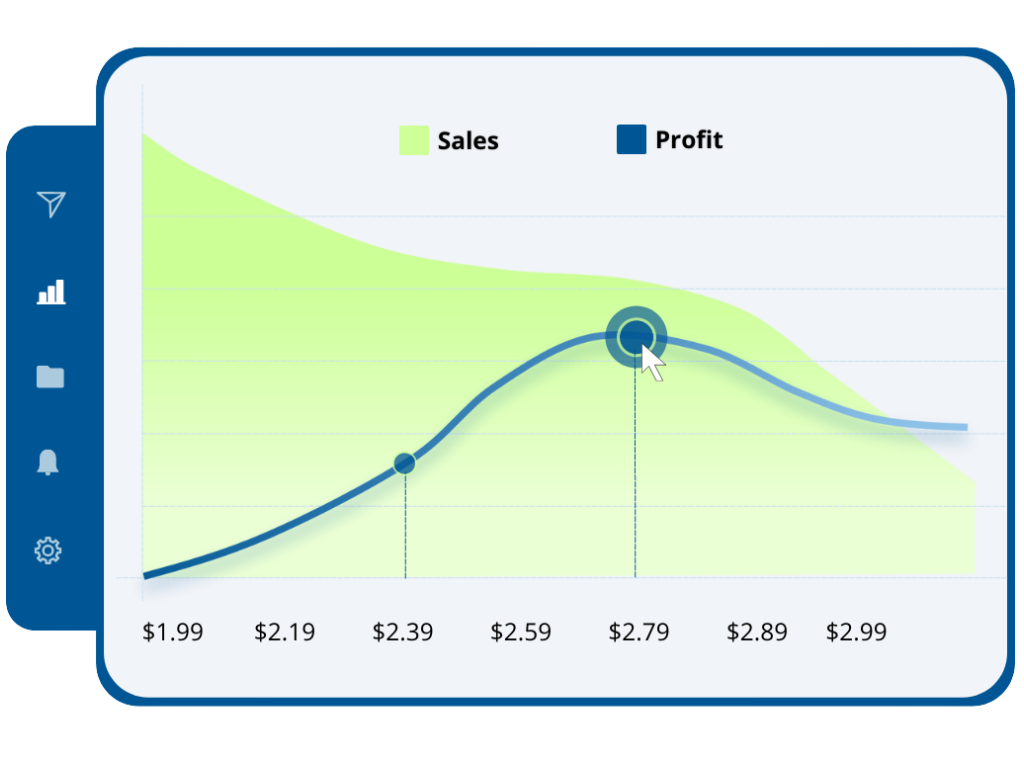May 13, 2022
The Conjoint Killer? Implicit Intelligence™- A new gold standard in price research


Nowadays, marketers are in a dilemma. All pricing research methods have their own drawbacks.
Traditional survey methods such as Van-Westendorp or Garbor-Granger are practical and inexpensive. However, their validity is severely limited.
Conjoint measurement leads to more valid survey results than direct methods. However, setting up a study requires certain expertise, so a broad application can be very costly.
Pricing software, which analyzes price variations and sales fluctuations, is also limited in its applicability due to its limited price range.
Available methods are therefore either not valid enough, too limited, especially for new products, or too expensive.

Recent developments, however, give hope.
The bestselling book „Pricing Intelligence“ has more on the topic and
Complex technology always sounds complicated to use. Fortunately, this is no longer the case. An iPhone or a Tesla is highly complex but simple to operate. This is the guiding principle of modern Saas applications.

As I will show in detail below, the new technology delivers three results:
– Simple: studies can be easily set up online directly by marketing professionals. No need for lengthy back and forth with a market research agency or market research department.
– Accurate: The accuracy even exceeds the quality of the previous “gold standard”.
– Inexpensive: Because the methodology follows a simple process, it is largely automated and therefore inexpensive. Because the output provides understandable recommendations instead of ambiguous complex dashboards and reports, there are neither external agency costs nor high operational costs.

In 2018, the brand prepared further product innovations. The focus was on launching mobile, portable speakers that can be used both at home and on the go.
“In the product development process, the design and features of the future product change quickly. That’s where an insight tool that provides fast, agile, and valid feedback is useful” said David Feick, head of market research at the time.

Sonos would become one of the first well-known brands to use Implicit Intelligence™.
Products were launched at the exact price the method determined.

The products are launched today as Sonos MOVE and ROAM with huge success and still sell for $399 for MOVE and $199 for ROAM.
Some professionals prefer to access video tutorials around pricing and insights
Implicit Intelligence solves the problems of direct methods like Garbor-Granger as well as indirect methods like Conjoint by combining the measurement methods of Neuroscience and Causal Machine Learning.
Implicit measurement
95% of the price decision is based on a pre-existing attitude towards the price, which is implicitly and immediately retrieved at the point-of-sale. It takes consumers less than 1 second to decide whether a product is expensive, cheap or appropriately priced. This unconscious opinion (in English “attitude”) significantly influences all downstream rational thought processes.
This implicit attitude towards price is the result of previous experiences and perceptions of similar products. However, even with products where we have no objective price, people have an approximate expectation. This expectation IS the opinion.
What is the price of a “Rex ZX screw” in the engine block of a BMW X5? Even though I don’t know this screw, I suspect something between five or fifty euros. A price of 500 euros would make me suspicious. Why? Consumers extrapolate from all screw prices experienced so far. 500 is simply far off of 50.
Psychology and neuroscience have developed a method that can precisely reveal unconscious attitudes. The so-called “Implicit Association Test” (IAT) can also be used to determine whether someone has a racist or misogynistic attitude. It does it even against the will of the respondent.
Similarly, the IAT is used to avoid the biased effects of direct pricing surveys.
Specifically, the respondent is shown the product with a price. He is asked to answer yes or no to a question as shown in the graphic. The trick is that it is not so much the answer itself but the reaction time that is decisive.
Slowly given answers are, according to neuroscience research, a result of rational thought processes. But since the method wants to measure the attitude BEFORE the thinking process, fast answers get more weight in the analysis.
At the same time, there are thresholds known from physiology – there are response times that are basically physiologically impossible.
IAT applications for pricing differ, among other things, in the type of adjectives used. The classical method uses “expensive” and “cheap”.
However, studies by the University of Hannover show that these adjectives have predictive weaknesses:
Problems 1 and 3 have been solved by the researcher by exploring other adjectives and expanding the total number to four.
Issue 2 is solved by using causal machine learning.
Causal Calibration
Implicit Intelligence also measures the implicit desire to buy. However, this is not explicitly used to calculate purchase intent because it is influenced by many factors such as personal situation or budget, which cannot be controlled so well in the survey because they are unknown.
Causal research has developed, among other things, the instrumental variable method (or 2SLS). The idea here is to use a variable as an indicator as a proxy that is known to be less subject to this influence of unknown factors.
The responses from the IAT to the four standardized adjectives are now used to predict the implicitly measured willingness to buy by applying a machine learning model.
The output of this model is based on information that is no longer situation or budget-dependent. It is causally “adjusted”.

Market Calibration
Stage three calibrates the demand forecast of the system because due to certain market peculiarities there is always an actual-target gap. A machine learning model is also used for this, which is trained on the basis of many products for which the implicit intelligence process was carried out.
The result is a method that achieves the highest precision with small sample size. This is possible because rational and situational bias effects are eliminated and the result is calibrated to real data.


Today pioneers use the latest pricing survey tools that use Neuroscience + AI
Interested professionals can use some tools even for free and explore on its own
You can access supra tools free here.
Price research has made significant progress in the last decades. However, all methods have many limitations. Either validity is very limited or methods are complex and expensive.
Methods of Implicit Intelligence™ are now for the first time very valid with high prediction quality as well as simple and inexpensive at the same time.
This is possible because Neuroscience methods measure implicit (unconscious) attitudes, Causal Machine Learning establishes the connection to willingness to buy and calibration with real data removes the influence of external effects.
Read more at Supra.tools – the leading tool in this field.
In my email newsletter “Pricing Insights” I cover the whole range of pricing insights solutions-from Garbor Granger to Conjoint, from NeuroPricing to Pricing Software Systems. I describe the application in various fields from new product pricing to promotion, from brand premium to feature pricing.
Keep up to date here.